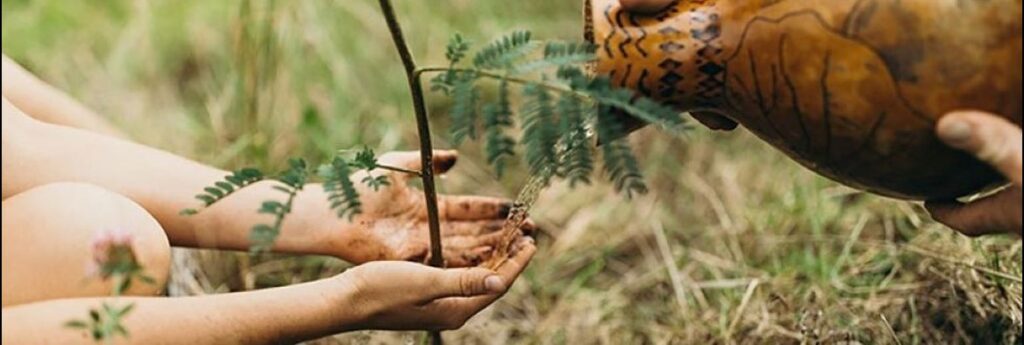As Maui recovers from devastating wildfires, travelling to Hawaii for many has become more purposeful. While surf, sand and sun are definitely still on the itinerary, there are many experiences waiting for visitors that reflect the importance and meaning of life that can’t be found in all the guidebooks just yet.
In the islands – Kaua‘i, O‘ahu, Maui, Moloka‘i and Lāna‘i, and the island of Hawaii – its called travelling “pono” (correctly), and encompasses an infinite list of enriching and meaningful travel possibilities that prescribe to another Hawaiian concept – “mālama,” or to take care of our earth, each other, and ourselves.
Here are several ways to redefine a visit to the Hawaiian Islands that equally benefit visitors, the destination, and its residents:
Give back
Native Hawaiians understand the relationship between humans and the natural world as a reciprocal one – the notion being that if people mālama the land, the land will, in turn, provide them an abundance of life and care.
With that crucial relationship firmly in mind, volunteer organizations and travel partners statewide now offer a range of opportunities for visitors to engage in mindful travel through the Mālama Hawaii initiative. Volunteer experiences range from reforestation projects and restoration of early Hawaiian structures to coastline cleanups, clearing invasive flora and more. Engaging with the land and culture during a visit leaves a positive impact and provides visitors with a more personal and deeper connection to the Islands.
Embrace culture
Many Hawaiian experiences and activities can comfort or rejuvenate one’s mind, body, and soul. For example, E ala ē, led by Hawaiian cultural practitioners at several resorts across the Islands, is a Hawaiian oli (chant) welcoming the sun’s rise from the ocean each morning and offering all who speak its words energy and a release from life’s stresses to face the day ahead.
E ala ē and other authentic cultural experiences – such as lei making workshops, hula lessons, nature walks, language lessons and the sharing of Indigenous knowledge – are led by native Hawaiian cultural ambassadors for resort guests and help reshape Hawaii’s visitor industry for the better in multiple ways.

A large part of embracing a culture is learning about and understanding it, which can be begun at a host of museums and historic sites, including refuge and spiritual sanctuary Pu’uhonua O Hōnaunau National Historical Park, and the massive stone temple of seaside Pu‘ukoholā Heiau National Historic Site, both on the island of Hawaii.
Don’t mind getting your hands dirty? Visit the breathtaking Olowalu Valley on Maui to help plant native plants, remove invasive species, and restore the lo‘i kalo (taro patch) at Kīpuka Olowalu. On O‘ahu visitors can learn about ecological issues affecting Maunalua Bay with community group, Mālama Maunalua, including helping members remove invasive algae threatening marine sanctuaries in the bay’s nearshore waters.
And for those interested in learning ka ‘ōlelo Hawaii (the Hawaiian language) or topics and history of the Hawaiian culture, the Native Hawaiian Hospitality Association offers training programs exploring Hawaiian language, history, and cultural stories.
Get local
Another way to travel differently in Hawaii is to immerse oneself in the local food culture, diversity of small towns and interesting districts, and community festivals and events. Take time to break away from your resort area to explore and support local towns, retailers, restaurants, and more throughout the Islands.
On Kaua‘i’s south shore, Po‘ipu is a great small town packed with a variety of local restaurants and boutique shops, while in Maui, stroll through the quaint, colourful town of Pā‘ia perusing its intriguingly arty retailers, surf shops, galleries, and boutiques.
Or check out downtown Honolulu’s Chinatown district for a modern and traditional mix of restaurants and bars, small boutique shops, multiethnic foods and goods, lei makers, coffee cafés, temples, apothecary shops and more.
Hilo, Hawaii, offers one of the best spots to chat with island farmers and producers – and try their produce and food goods – at the Hilo Farmers Market. You may even discover a few things to eat you’d likely never find anywhere else in the Islands (fresh-picked jaboticaba, anyone?).
And don’t miss an even deeper dive into the communities at popular annual events and celebrations. Many of these keep elements of Hawaii’s multitude of cultures alive, such as the Paniolo Heritage Rodeo, showcasing paniolo (Hawaiian cowboy) traditions; Lei Day Celebration, honouring the craft of lei (garland or necklace, often made of flowers); E Kanikapila Kākou, honouring authentic Hawaiian-style music.
Food festivals focused on Hawaii’s bounty of local produce include the annual Hawaii Food and Wine Festival, held on the islands of Maui, Hawaii, and O‘ahu; the Kona Coffee Cultural Festival; and Big Island Chocolate Festival, spotlighting Hawaii Island’s cacao and coffee industries.
To find out more about travelling pono, check out the gohawaii.com website.

